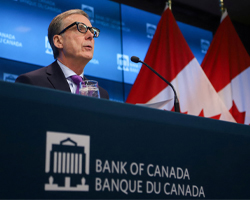Global Indices Dip, Apple Faces Challenges, Fed Chair's Testimony Anticipated | Daily Market Analysis

Key events:
- UK - Spring Forecast Statement
- USA - ADP Nonfarm Employment Change (Feb)
- Canada - BoC Interest Rate Decision
- USA - Fed Chair Powell Testifies
- USA - JOLTs Job Openings (Jan)
- USA - Crude Oil Inventories
On Tuesday, investors in both the United States and Europe approached the equity market with caution, leading to a decline in major stock indices. Meanwhile, Bitcoin and gold reached unprecedented highs, capturing the attention of market participants closely monitoring upcoming economic indicators and central bank actions.
In anticipation of the upcoming February jobs report scheduled for Friday and Fed Chair Jerome Powell's two-day congressional testimony beginning on Wednesday, all three major US stock indices mirrored the downward trend seen in their European counterparts.
The Dow Jones Industrial Average experienced a decline of 400 points, while the S&P 500 lost 46.85 points. The Nasdaq Composite dropped 296.70 points, closing at 15,910.81.
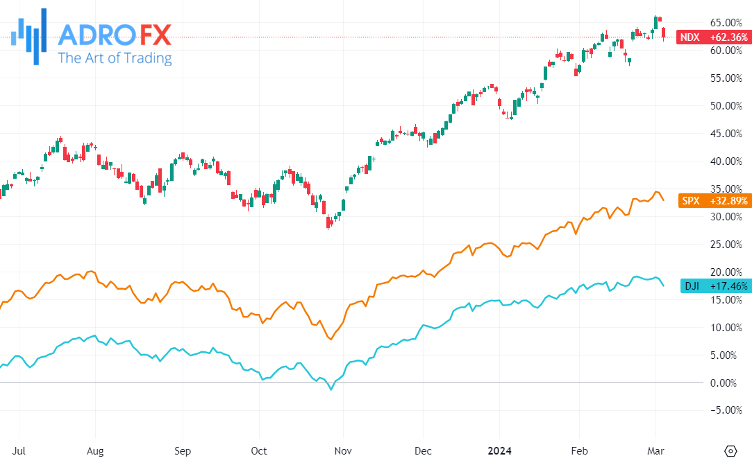
Apple Inc (NASDAQ: AAPL) also faced a decline of over 2% following a report by short-seller Counterpoint Research, revealing a 24% plunge in iPhone sales in China. This dip was attributed to increased competition from local firms such as Huawei and Xiaomi (OTC: XIACF). Despite this challenging environment, Wedbush expressed optimism, stating that Apple is likely to meet expected iPhone sales and highlighted the resilience of its "rock-solid" services.

Investors were eagerly awaiting insights into monetary policy from Federal Reserve Chair Jerome Powell during his two-day testimony before Congress on Wednesday and Thursday. Analysts anticipated Powell to maintain a hawkish stance, emphasizing the central bank's need for more convincing evidence that inflation is approaching its annual 2% target.
Despite warnings from several Fed officials against early rate cuts, citing concerns over persistent inflation and the robustness of the US economy, analysts expected the Fed to gain enough conviction by June to begin reducing rates. Alongside Powell's testimony, market focus this week remained on key nonfarm payrolls data for February.
On Tuesday, the Canadian Dollar made gains against the US Dollar following lower-than-expected readings for the US ISM Services Purchasing Managers Index and US Factory Orders. The market's optimism for a swifter path to Federal Reserve rate cuts is pushing the Canadian Dollar towards higher levels, fueled by hints of a deepening economic contraction in the US.
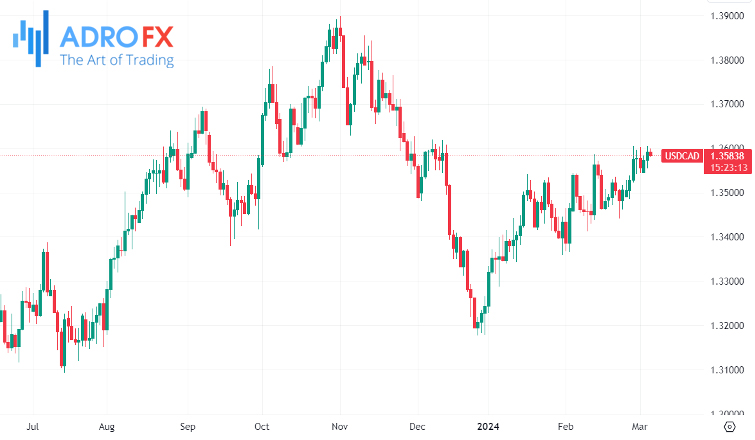
The Bank of Canada is scheduled to announce its decision on Wednesday, widely anticipated to maintain the current interest rate at 5.0%.
EUR/USD reached a new intraday high of 1.0876 on Tuesday but retraced to the day's opening levels after a disappointing result in the US ISM Services Purchasing Managers Index prompted a market readjustment.
Although Europe's final HCOB Composite PMI for February exceeded expectations with additional gains over the preliminary print, the pan-European PPI failed to recover as anticipated by the markets.
EUR/USD is grappling with challenges to generate sufficient bullish momentum, keeping the pair close to its 200-day Simple Moving Average (SMA) at 1.0830. Intraday support is notably holding near 1.0850, emphasizing the struggle for upward momentum in the currency pair.

The Australian Dollar managed to recover from intraday losses despite encountering early downward pressure in the Asian trading session, attributed to a weaker equity market. The S&P/ASX 200 Index, reflecting a broader sell-off in technology stocks on Wall Street and diminished performance in mining stocks, has witnessed a decline over the past three consecutive sessions.
Despite this, the Australian Dollar exhibited resilience in the face of softer-than-expected Gross Domestic Product data. The GDP, growing by 0.2% quarter-on-quarter in the fourth quarter of 2023, slightly missed market expectations of remaining unchanged at 0.3%. On a year-on-year basis, the GDP expanded by 1.5%, surpassing the anticipated 1.4%, albeit falling short of the previous growth rate of 2.1%.
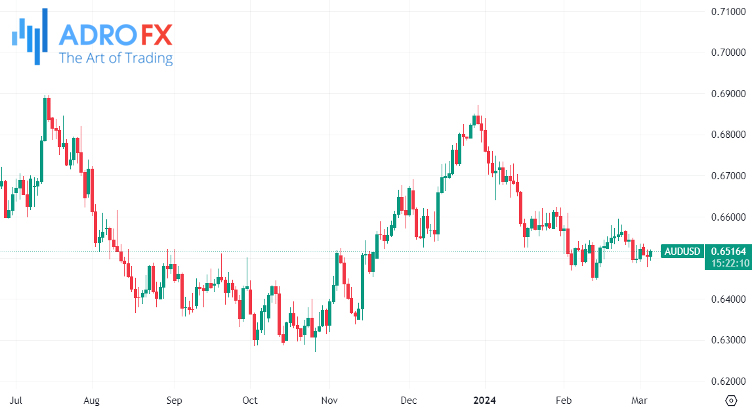
The Reserve Bank of Australia remains vigilant in monitoring economic indicators for signs of a potential slowdown, with the aim of steering inflation back towards its target. The RBA foresees a further moderation in economic growth to 1.3% by June 2024.
Shifting focus to GBP/USD, the currency pair retraced its daily losses and appears poised to continue its positive momentum, hovering around 1.2700 during the Asian trading session. The anticipation builds ahead of the UK Chancellor Jeremy Hunt's Budget Report scheduled for Wednesday. Hunt is expected to unveil the government's fiscal agenda, outlining tax and spending plans in the lead-up to the general election. Speculation suggests a potential reduction in national insurance contributions for employees, following a 2p reduction announced in the autumn statement.
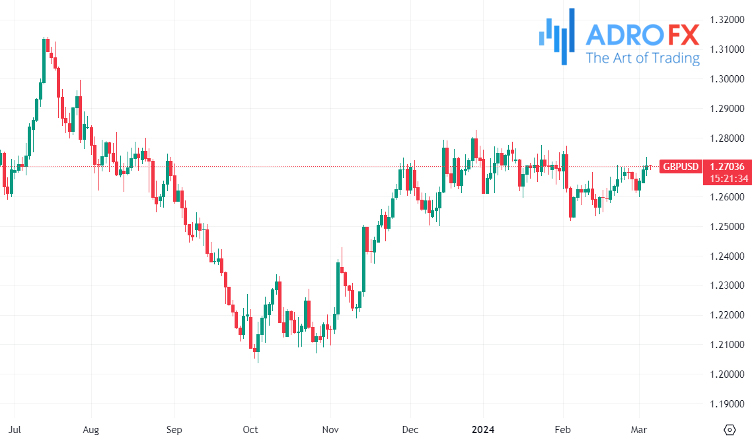
However, the UK's BRC Like-For-Like Retail Sales (YoY) for February fell short of expectations, posting a figure of 1.0% compared to the anticipated 1.6%. This figure represents a decline from the previous period's 1.4%. Investors are keenly awaiting the release of the S&P Global/CIPS Construction PMI for February later in the day, which promises additional insights into the economic performance of the United Kingdom.

